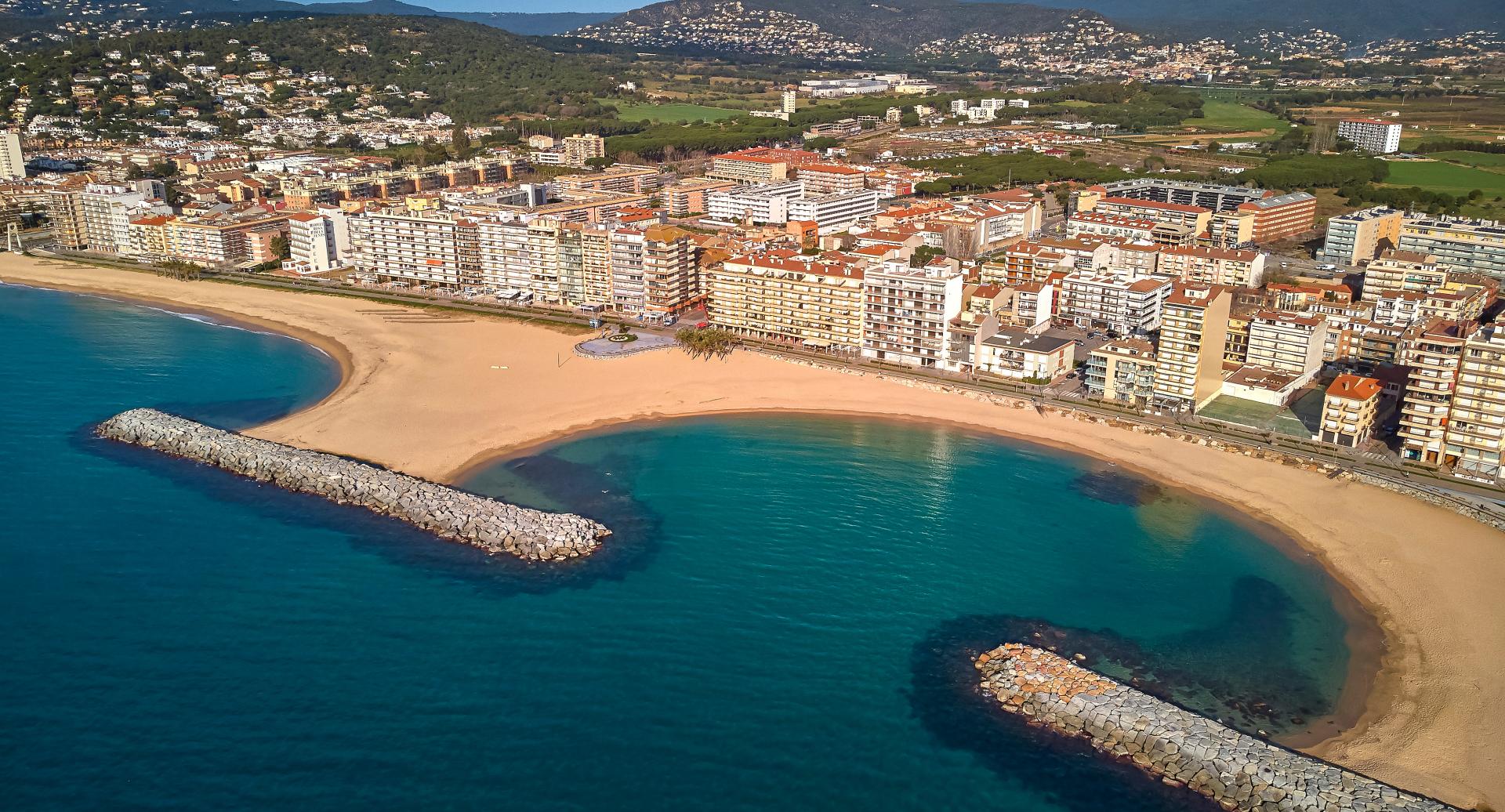

The Costa Brava is sun, beach, coves hidden among the vegetation, refreshing baths, crystalline waters, tranquility, walks along the coastal paths, charming fishing villages... You get the idea, right? Well, take your diary, find the next space in it and get ready for a great day –or as many as you can– at the beach.
We present you with the best beaches and coves in the area, so you can enjoy the sun, the sea and the tranquility in a dream environment. From Sant Antoni beach, the main beach of the municipality, to the small cove of Can Cristus, surrounded by nature and perfect for diving lovers. We invite you to immerse yourself in the crystalline waters and relax on the golden sand of our beaches and coves.
Get ready to live a unique experience on the Costa Brava!
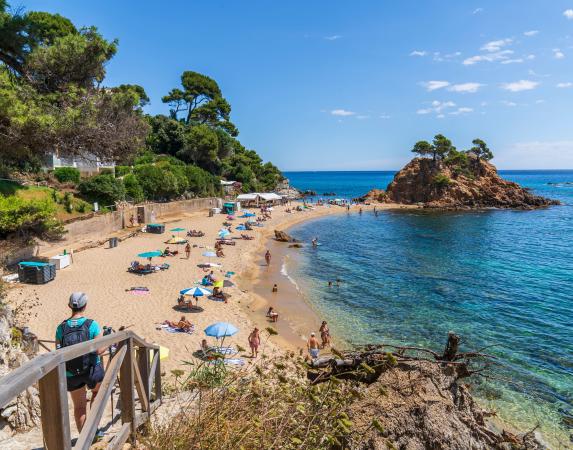
Cap Roig is a rock formation made up mostly of feldspar crystals that give it its reddish color.
Together with the next cove (Belladonna) they constitute a sector in the area of Treumal called Condado de San Jorge. The sand in this cove is thick and can be reached on foot from the coastal path or by access stairs from the main road that connects Playa de Aro with Calonge-Sant Antoni.
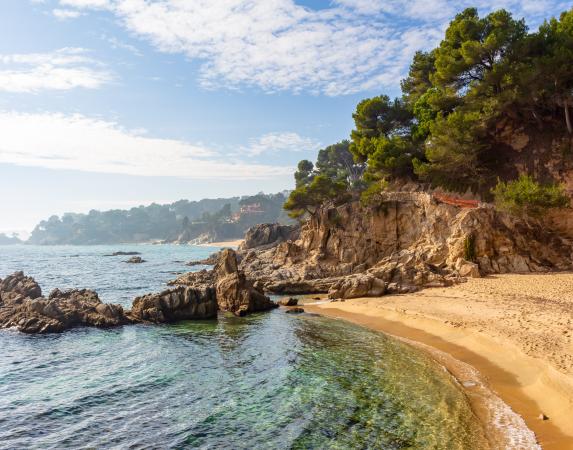
The cove of La Roca del Paller takes its name from the memories that the rock formation in the shape of a haystack evokes in us right next to the water.
The hayloft provided the surrounding farmhouses and houses with a space and was used for feeding and bedding the cattle. In Cala del Forn the site of an ancient Roman oven could have been found, of which no remains are currently preserved. The sand of the two coves is thick.
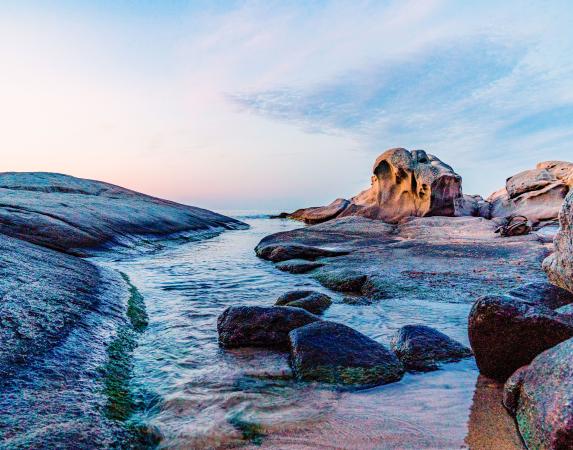
These areas are made up of rocks that the passage of time and the onslaught of the waves have shaped in a peculiar way, all of them well plastered and flat, an unusual formation to see on our coast. Among all the rocks, we find a curious one that has the name Foradada. This cove is thick sand.
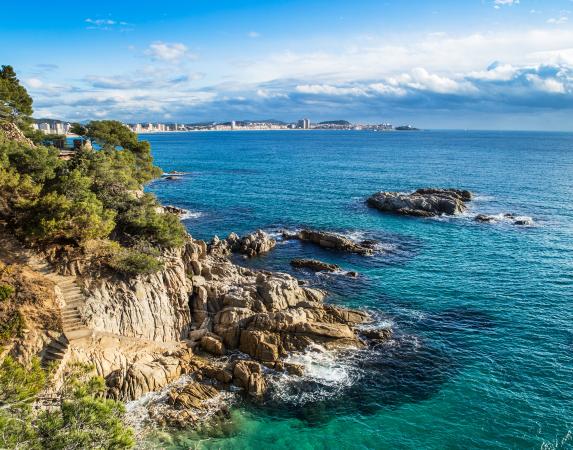
These two coves are separated by the tip of Torre Valentina. They are called like this because for a long time edicts written by the same mayor prohibited people of both sexes from bathing together. There is also the cove dels Capellans, which was the place for the bathing of the clergy of the parish of Sant Martí. The Racó de les Dones cove is made of fine sand, while the dels Homes and dels Capellans coves are rocky.
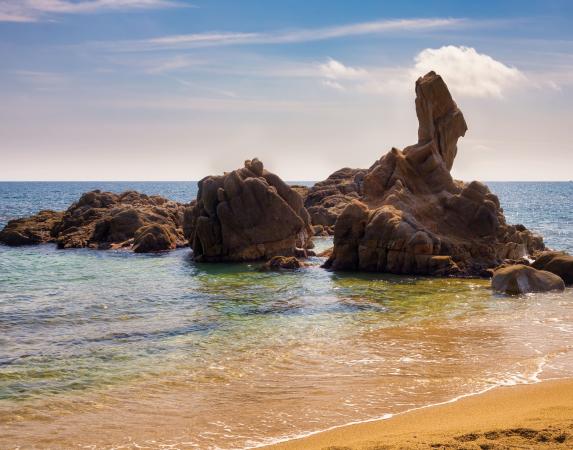
Wide cove framed in a sparsely urbanized environment with a predominance of rocks and vegetation. It is accessed on foot along the coastal path or by stairs from the road.
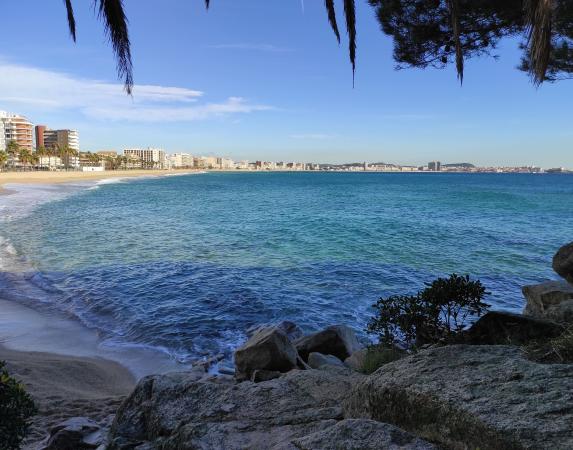
Torre Valentina beach is a wide, urban beach, which is separated from Sant Antoni by the Calonge stream. On this beach we find an old watchtower from the 16th century that gives it its name. Next to the Torre Valentina the itinerary of the coastal path begins.
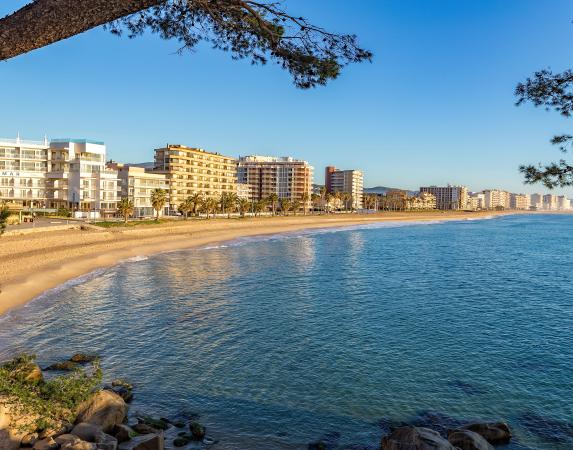
Sant Antoni beach is an urban beach that occupies the central third of the bay. It is protected by three characteristic T-shaped breakwaters (La Amistad breakwater, Middle breakwater and Costa Brava breakwater) and two thin breakwaters perpendicular to the coastline.
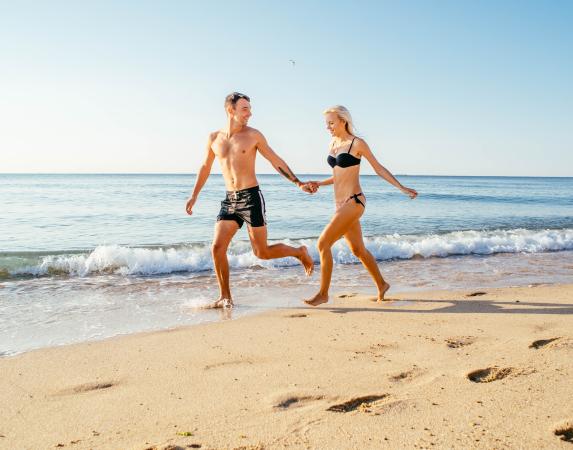
It is the last of the beaches in the bay of Sant Antoni, before reaching the municipality of Palamós. The beach of Es Monestrí has a particular air: seen from Palamós it is like a green spot that comes down from the Gavarres. The promenade joins this beach with that of Sant Antoni through the bridge over the Aubi stream. On this beach, we can find the only Sailing Skate Club in the province of Girona.